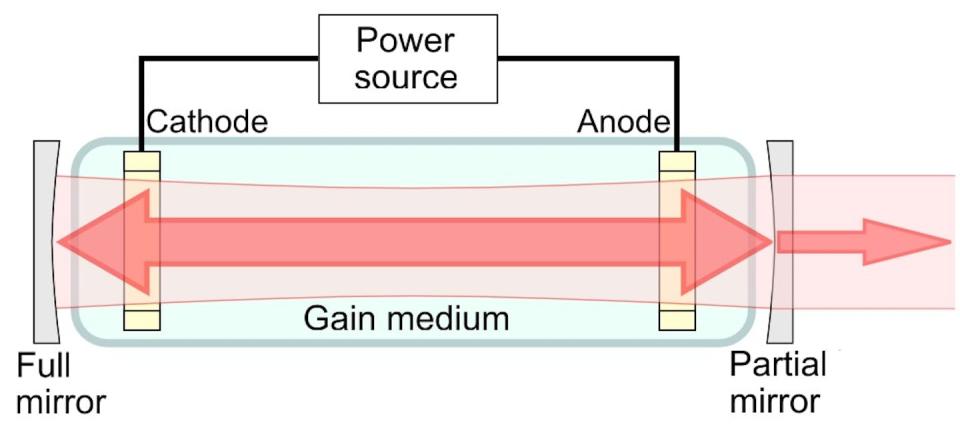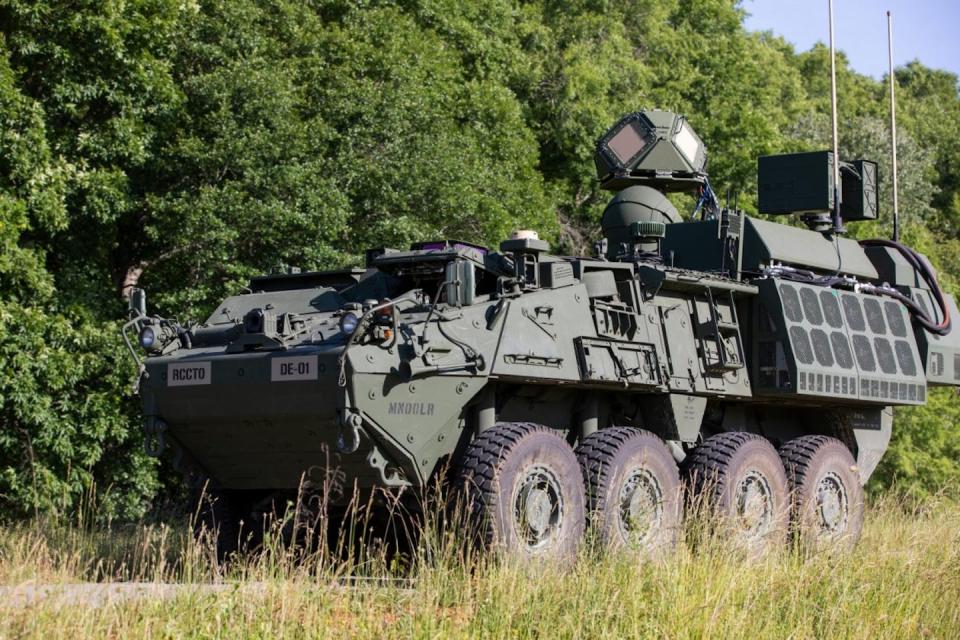Nations around the world are rapidly developing high-energy laser weapons for military missions on land and sea, and in air and space. Visions of small, inexpensive drones filling the skies or gliding across the waves are encouraging militaries to develop and deploy laser weapons as an alternative to costly and potentially overwhelming missile-based defenses.
Laser weapons have been a staple of science fiction since long before lasers were even invented. Recently, they have featured prominently in several conspiracy theories. Both types of fiction emphasize the need to understand how laser weapons actually work and what they are used for.
How lasers work
Lasers use electricity to generate photons, or particles of light. The photons pass through a gain medium, a material that creates a cascade of additional photons, rapidly increasing the number of photons. All these photons are then focused into a narrow beam by a beam director.

In the decades since the discovery of the first laser in 1960, engineers have developed various lasers that generate photons at different wavelengths in the electromagnetic spectrum, from infrared to ultraviolet. The high-energy laser systems that are finding military applications are based on solid-state lasers that use special crystals to convert the input electrical energy into photons. A key feature of high-power solid-state lasers is that the photons are created in the infrared part of the electromagnetic spectrum and therefore cannot be seen by the human eye.
When it interacts with a surface, a laser beam generates different effects based on the wavelength of its photons, the power in the beam and the material of the surface. Low-power lasers that generate photons in the visible part of the spectrum are useful as light sources for cues and light shows at public events. These beams are of such low power that they simply reflect off a surface without damaging it.
High power laser systems are used to cut biological tissue in medical procedures. The highest-powered lasers can heat, vaporize, melt and burn through many different materials and are used in industrial processes for welding and cutting.
In addition to the power level of the laser, the ability to deliver these various effects is determined by the distance between the laser and its target.
Laser weapons
Based in part on advances in high-power industrial lasers, military uses for high-energy lasers are increasing. One important advantage of high-energy laser weapons is that they provide an “infinite magazine.” Unlike traditional weapons such as guns and cannons that have a limited amount of ammunition, a high-energy laser can sustain a shot as long as it has electrical power.
The US Army is deploying high-energy truck-based lasers to shoot down a range of targets, including drones, helicopters, mortar shells and rockets. The 50-kilowatt laser is mounted on a Stryker infantry fighting vehicle, and the Army deployed four of the systems for battle testing in the Middle East in February 2024.
The US Navy has deployed high-energy ship-based lasers to protect small, fast-moving ocean surface vessels as well as missiles and drones. The Navy installed a 60-kilowatt laser weapon on the destroyer USS Preble in August 2022.
The Air Force is developing high-energy lasers on aircraft for both defensive and offensive missions. In 2010, the Air Force tested a megawatt laser mounted on a modified Boeing 747, hitting a ballistic missile as it launched. The Air Force is currently working on a smaller weapon system for fighter aircraft.
It appears that Russia is developing high-energy ground-based lasers to “blind” enemy satellites.


The limits of laser weapons
One key challenge for militaries using high-energy lasers is the high power levels required to create useful effects from a distance. Unlike industrial lasers that are only a few inches from their target, military operations involve much greater distances. To defend against an incoming threat, such as a mortar shell or a small boat, laser weapons must engage their targets before they can do any damage.
However, the laser beam requires thousands to hundreds of kilowatts of power to burn through materials at safe distances. The smallest prototype laser weapon draws 10 kilowatts of power, roughly equivalent to an electric car. The latest high-powered laser weapon under development draws 300 kilowatts of power, enough to power 30 households. And because high energy lasers are only 50% efficient at best, they generate a huge amount of waste heat that needs to be managed.
This means that high-energy lasers require an extensive power generation and cooling infrastructure that places limits on the types of effects that can be generated from various military platforms. Army trucks and Air Force fighter jets have the least amount of space for high-energy laser weapons, so these systems are limited to targets that require relatively low power, such as downing drones or disabling missiles. Larger ships and aircraft can accommodate larger high-energy lasers that can burn holes in boats and land vehicles. Permanent ground-based systems have the least constraints and therefore have the highest power, which may make it possible to blind a distant satellite.
Another important limitation of platform-based high-energy laser weapons relates to the concept of an infinite magazine. Since the laser’s power source must be carried by the truck, ship or plane, which will limit the power source’s capacity, the lasers can only be used for a limited amount of time before they wear out their batteries to recharge.
There are also fundamental limitations to high-energy laser weapons, including reduced effectiveness in rain, fog and smoke, which scatter laser beams. The laser beams must also be locked onto their targets for several seconds to do damage. Maintaining current prototype laser weapons in combat zones is a challenge.
No fire from the skies
A new type of conspiracy theory has emerged in recent years claiming that nefarious entities used high-energy airborne lasers to start wildfires in California, Hawaii and Texas. This is very likely for several reasons.
First, it would require a large power source installed on a large aircraft to generate the level of power required to ignite vegetation with high-energy lasers from the sky. A plane of that size would be very visible just before any fire was lit. Second, in some images that claim to show the fires being started, the laser beams are green. Beams from high energy lasers are invisible.
What comes next
In the future, it is likely that high-energy laser weapons will continue to evolve with increased power levels that will expand the range of targets they can be used against.
High-energy lasers are more likely to find non-military applications such as protecting the public from terrorist attacks due to emerging threats from low-cost armed drones such as those used in conflicts in the Middle East and Ukraine.
This article is republished from The Conversation, a non-profit, independent news organization that brings you reliable facts and analysis to help you make sense of our complex world. Written by: Iain Boyd, University of Colorado Boulder
Read more:
Iain Boyd receives funding from the US Department of Defense and Lockheed-Martin Corporation.